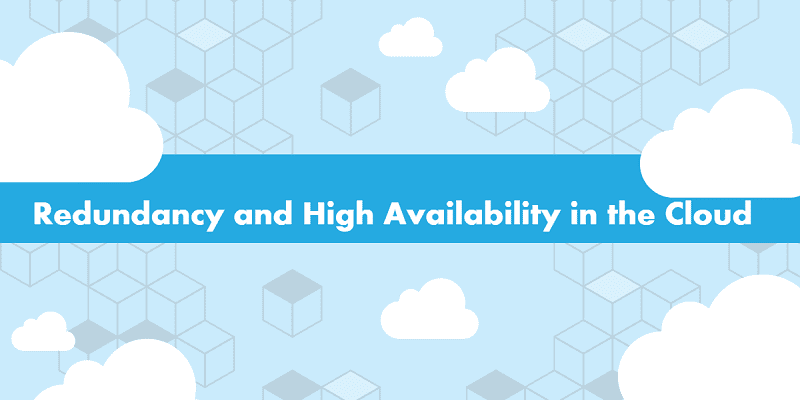Having a Redundancy plan is no longer an option – it’s a must for companies that prioritize the security of their IT environment!
Any company, regardless of its size or segment, needs to maintain the continuity and stability of the processes and applications of its business, as they depend on all its resources to maintain its survival. However, some of these organizations do not assume the possibility of eventualities that could compromise the availability of their system.
All organizations, however solid they may be in the market, are subject to disruptive events if they do not have a plan or strategies outlined, so the ideal scenario is that they are prepared for contingencies with a contingency plan avoid financial damages and technological failures.
Risks of keeping all information in one place
Anyone who chooses to maintain an internal Data Center, because it feels more secure in keeping the server indoors, becomes more vulnerable to instabilities, putting at risk the loss of their vital information. This is because hardly an environment within a company will meet the need for a robust infrastructure to maintain the security of stored data. Information stored in an internal infrastructure in an inappropriate environment is at risk of catastrophes that damage the server, such as:
Natural disasters – Catastrophes caused directly by nature, such as storms that result in a flood, power outages, landslides, among other disasters.
Software failures – Software failures can be triggered by either authorization failures that allow access to sensitive data to unauthorized users, or failures in data encryption, for example.
Human Failures – One of the examples of human failures that, if not properly targeted and trained, can result in the exclusion of data and information, modifications, or configuration errors that may harm your system.
Scenario
In a hypothetical scenario, imagine a consolidated company that has been operating for more than 25 years in the market, with a server allocated internally and a high demand of customers that depend on the availability of its services. There is a flood within that organization, affecting the entire IT environment, affecting servers and machines, resulting in the loss of all functions and information. It would be a great loss, wouldn’t it? 25 years in the market hampered by an eventuality that could have been avoided.
Also check: Know How Cloud Computing Is Transforming The World
And that is precisely why contingency plans exist today. The contingency plan addresses a company’s need to maintain the stability of its transactions, avoiding future disruptions and not letting its system remain at risk.
Let’s understand a bit more about the concept of Redundancy and how this solution can help you avoid harm within an organization.
The importance of a Redundancy Plan
Creating a disaster recovery plan involves more than backing up and storing information in a place outside the company’s physical environment.
Business cannot stop! Today we are totally dependent on technology to perform our day-to-day tasks, especially the companies that make use of the technological resources to store and transmit information at all times. Therefore, it is common for organizations to maintain the availability and continuity of their system, as the occurrence of an unexpected failure would absolutely result in financial losses.
A Data Center Redundancy plan aims to make an organization less impact and automatically reestablish itself by maintaining continuity of its activities in cases of disruptive events that leave the information resources out of the air (partially or totally). It must be deployed following an impact analysis that would be caused to your business in the event of a disaster by specifying identified threats and risks, such as: The impact of unavailability; if your company could continue with its operations after suffering a disaster or for how long your company can stand still. After analyzing these data, a strategy of continuity plan is elaborated for the most important information that cannot suffer from paralysis.
The Redundancy plan is a prevention strategy that ensures the availability and stability of IT assets even in the event of human, technological or natural disasters, allowing your company to continue its activities without interruption. This is because all the volume of data that is stored in one Data Center is mirrored in another distinctly geographically separate infrastructure and an entire copy of all mission-critical information and applications is made.
Security of Stored Data
Fear or even a lack of information still means that many CIOs still have the stamina to keep a server out of their company. But as already mentioned, an internal infrastructure will unlikely have all the necessary structure to keep the security of data and information stored, so it is imperative to leave this fear aside and choose the one that has the best support to protect your system.
In the Redundancy plan all vital information for your company will be stored in Cloud Computing with data encryption, high availability and allocated in a Data Center with a robust and modern infrastructure, having the environment fully designed with all the necessary care ( 24-hour monitoring, and its own electrical substation) to further ensure the safety of your stored data, as well as periodic maintenance to avoid possible equipment downtime.
Continuous Cloud
Speaking of IT security, it is essential to adopt a contingency plan that maintains the integrity of your vital information and applications.
If you would like to know more about our managed cloud hosting, please get in touch with our cloud experts.















